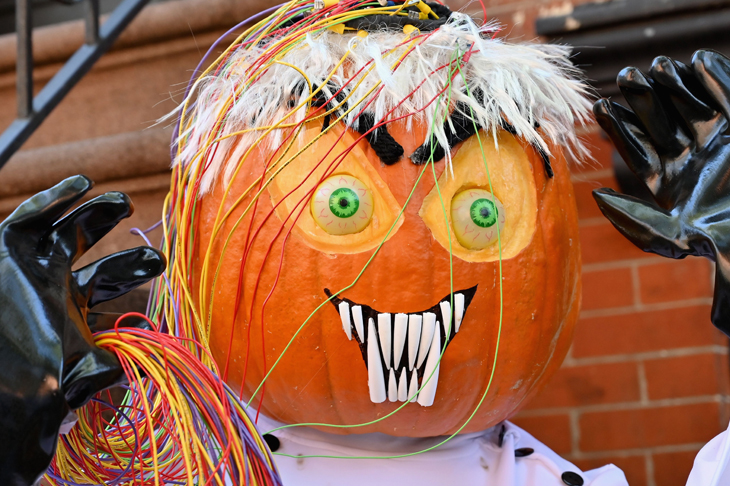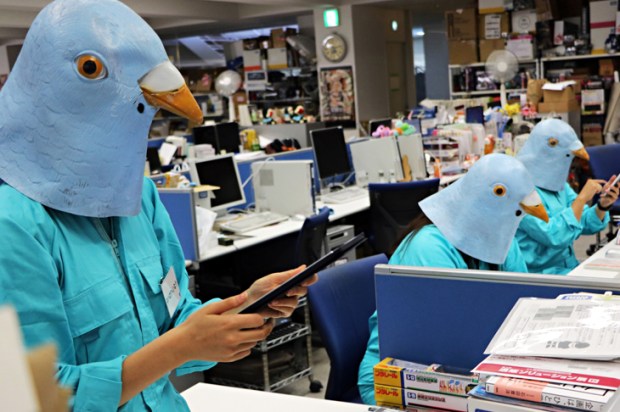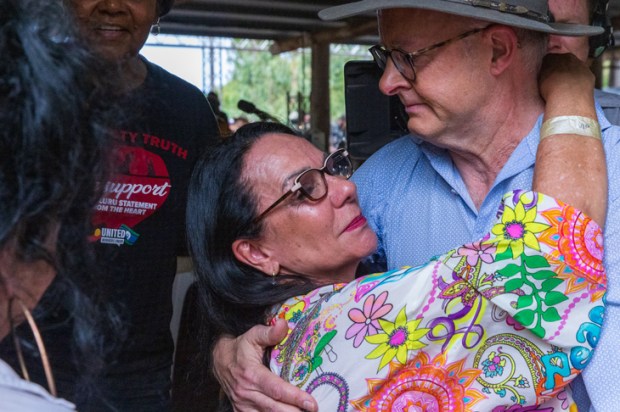The spooky science of transgenderism
Halloween, witches and bearded women. The witches’ scene in Macbeth invites a transgender reading, where Banquo muses, ‘You should be women, And yet your beards forbid me to interpret That you are so.’ There is certainly a transgender reading of Drag Queen Story Time, a new trend in primary schools where witch-like males, ‘wild in their attire’, as Banquo put it, cast weird incantations over kids. ‘Only you know whether you are a boy or a girl,’ they mutter from The Gender Fairy, an Australian book for four year-olds.
More conventional teachers read to children from the All of Us document, part of the ‘Safe Schools’ programme. Its transgender author, Margot Fink, identifies as a bisexual girl assigned male at birth and she teaches children ‘it’s up to the individual to decide what gender identity fits them best’. Kids can choose from such categories as genderqueer, trans guy, sister girl, or agender. Lesson 6 warns the child against binary prejudices such as ‘asking new parents whether their baby is a boy or a girl’.
Fair is foul and foul is fair, ideological fog and filthy air, but the kiddies take these lessons to heart: from the time Safe Schools and its spawn were inflicted on Australian students, we have witnessed a social epidemic of gender dysphoria which has caused untold suffering to parents and children alike. The Royal Children’s Hospital in Melbourne saw only one such child in 2003, but now around 250 each year, and it’s the same story at hospitals across the country.
Something wicked this way comes. That is why a group of doctors got behind paediatrics professor John Whitehall last month in his call for a parliamentary inquiry into ‘the rapid rise of childhood gender dysphoria in Australia and the lack of scientific basis for current medical treatment’. In just four days, at GenderInquiry.com, we gathered 257 medical signatories including 20 professors, 14 paediatricians and 9 child psychiatrists and sent a joint letter to the federal Health Minister, Greg Hunt. More recently, the National Association of Practising Psychiatrists has joined the call for an inquiry, and a Swedish child-and-adolescent psychiatrist, Professor Christopher Gillberg, has denounced the escalating ‘chemical brain modification and physical genital mutilation’ of children as ‘one of the biggest scandals in medical history’.
What seems most scandalous to any intelligent onlookers is that we know, as surely as we know anything in this field, that the vast majority of gender-confused children (around 80 per cent) will simply get over their identity issues at the time of puberty. How can we justify using puberty blockers to prevent children reaching the stage of life that we know would resolve the confusion for most of them?
Next most scandalous is the observation that this dangerous, irreversible ‘medical pathway’ might be undertaken before any psychological cause has been properly investigated and treated. Professor Whitehall writes to Minister Hunt, ‘Ideological commitment to the idea that a child can be “born in the wrong body” may make clinicians less alert to relevant psychiatric conditions like autism or depression that underlie a child’s gender confusion.’
For a doctor to declare that a child is ‘born in the wrong body’ is Halloween-level science. It is a mystical notion, not a medical diagnosis. ‘“Sex-change” is impossible,’ says Dr Paul McHugh, Distinguished Professor of Psychiatry at Johns Hopkins University. ‘The idea that one’s sex is fluid is doing much damage to families and children and should be confronted as an opinion without biological foundation wherever it emerges’.
Sex is not fluid. It is determined by the organisation of an animal’s reproductive system: the male sex is ordered to impregnation, the female sex to gestation. McHugh writes, ‘In biology, an organism is male or female if it is structured to perform one of the respective roles in reproduction… even when those individuals exhibit behaviours that are not typical of males or females.’
Note that last point carefully, because while sex is fixed, it does not fully determine gendered behaviour. A male might exhibit ‘feminine’ behaviour but he is still male.
Gender, according to the World Health Organisation, refers to ‘the socially constructed characteristics of women and men’. It puzzles me that the least deviation from some social stereotype of masculine or feminine puts a child under suspicion of being ‘born in the wrong body’. We need to loosen up. There is a rainbow spectrum of ways of being male, from the most macho to the most effete, but we are still male. If a boy adopts the persona of a girl he is not ‘born in the wrong body’; he is a feminised male at one end of the spectrum and we still love him. Don’t put lies on his birth certificate. Don’t change his name and make schoolmates use false pronouns. Tell him boys are free to be however they want, because we don’t do stereotypes here!
Then strive to understand what underlies his problematic self-image. McHugh notes, ‘Most young boys and girls who come seeking sex-reassignment… come with psychosocial issues – conflicts over the expectations and roles that they sense are attached to their given sex’. Dr Ken Zucker, who ran Canada’s largest clinic for childhood gender dysphoria, uncovered some curious examples:
When asked why he wanted to be a girl, one 7-year old boy said it was because he did not like to sweat and only boys sweat. An 8-year old boy commented that ‘girls are treated better than boys by their parents’ and ‘the teacher only yells at the boys.’ One 5-year old boy talked about having a ‘girl’s brain’ because he only liked Barbie dolls.
The trick is to treat confused kids according to the proven modalities of psychological and family therapy, not according to the spooky notion that a girl can be born in a boy’s body. Or have we, in Banquo’s words, ‘eaten on the insane root That takes reason prisoner?’
Got something to add? Join the discussion and comment below.
Get 10 issues for just $10
Subscribe to The Spectator Australia today for the next 10 magazine issues, plus full online access, for just $10.
You might disagree with half of it, but you’ll enjoy reading all of it. Try your first month for free, then just $2 a week for the remainder of your first year.














Comments
Don't miss out
Join the conversation with other Spectator Australia readers. Subscribe to leave a comment.
SUBSCRIBEAlready a subscriber? Log in